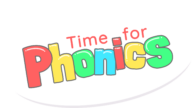Although we have our own fantastic decodable texts that align perfectly with our programme progression, we also understand that you may already have a set of existing physical decodable texts, or wish to purchase a set of decodable texts to support our programme. This blog post sets out some information, guidance and best practice to help you organise your existing or future decodable texts to support children’s reading fluency and progression in phonics.
What does Ofsted say about matching phonic knowledge to decodable texts?
In the latest (July 2022) Ofsted Inspection Handbook, Ofsted are very clear on their expectations when it comes to decodable texts. This is what they say:
245. In reaching an evaluation against the ‘quality of education’ judgement, inspectors will consider whether:
the sequence of reading books shows a cumulative progression in phonics knowledge that is matched closely to the school’s phonics programme. Teachers give pupils sufficient practice in reading and re-reading books that match the grapheme–phoneme correspondences they know, both at school and at home.
In its Bold Beginnings Survey, Ofsted reported that in some schools:
… developing children’s reading accuracy was hindered by the way (the schools) organised their reading books into bands. These schools mixed a range of reading schemes, bought at various times, many of which used different approaches to the teaching of reading. Inspectors found that this did not ensure that children read books at the right level of difficulty.
In response to this, the 2021 Reading Framework states:
So that beginner readers read books at the right level of difficulty, teachers should make sure that their organisation of the books matches exactly the order in which GPCs are introduced in the programme. For example, a book that includes the word ‘play’ should be placed so that children are not asked to read it until the digraph ‘ay’ has been taught.
What else does the 2021 Reading Framework say about decodable texts?
The 2021 Reading Framework also states:
Experienced readers can decode the specialist words in a book about advanced Physics, even if they cannot understand them. However, most texts are not decodable for children who are beginning to learn to read.
The national curriculum says that pupils should be taught to:
… read aloud accurately books that are consistent with their developing phonic knowledge and that do not require them to use other strategies to work out words.
This is why schools should invest in books that have been carefully structured in cumulative steps for children learning to read, so that they can decode every word as their knowledge of the alphabetic code increases. These books are often referred to simply as ‘decodable books’.

How to match your existing physical decodable texts to our order of progression?
Here we provide some information on how to match your existing books to our programme, however the same advice can be applied to any phonics programme you are using.
You may already have existing physical books – please don’t throw these away, but use them with caution.
It is hugely important that children are reading texts that are matched to the GPCs and tricky words they have been taught to date. This will allow them to use their phonic knowledge to decode words and develop reading fluency.
As we’ve mentioned, the Reading Framework and Ofsted clearly state that that children must be given books that match their phonics progression and therefore if you choose not to use our decodable texts, or supplement them with your existing physical books, they must introduce new GPCs in the same order as our progression so children can practise GPCs they have already learned. The tricky words must also follow the same progression.
Even if the books you have follow the Letters and Sounds progression, they still need to be organised to ensure they match with our progression. The books should also be classed as ‘decodable’ and should not contain words that cannot be decoded, unless those words have been taught as tricky words of course.
Children should be able to read these books with 90% fluency before they are assigned to them, so it’s important to choose and organise them carefully.
You may wish to share books with children that are of special interest to them, that are not decodable – it’s great to encourage this, as long as they are not being practised as reading books.
Take a look at the pictures below for more details on matching physical texts to our programme progression.
1. Head over to our decodable texts page.
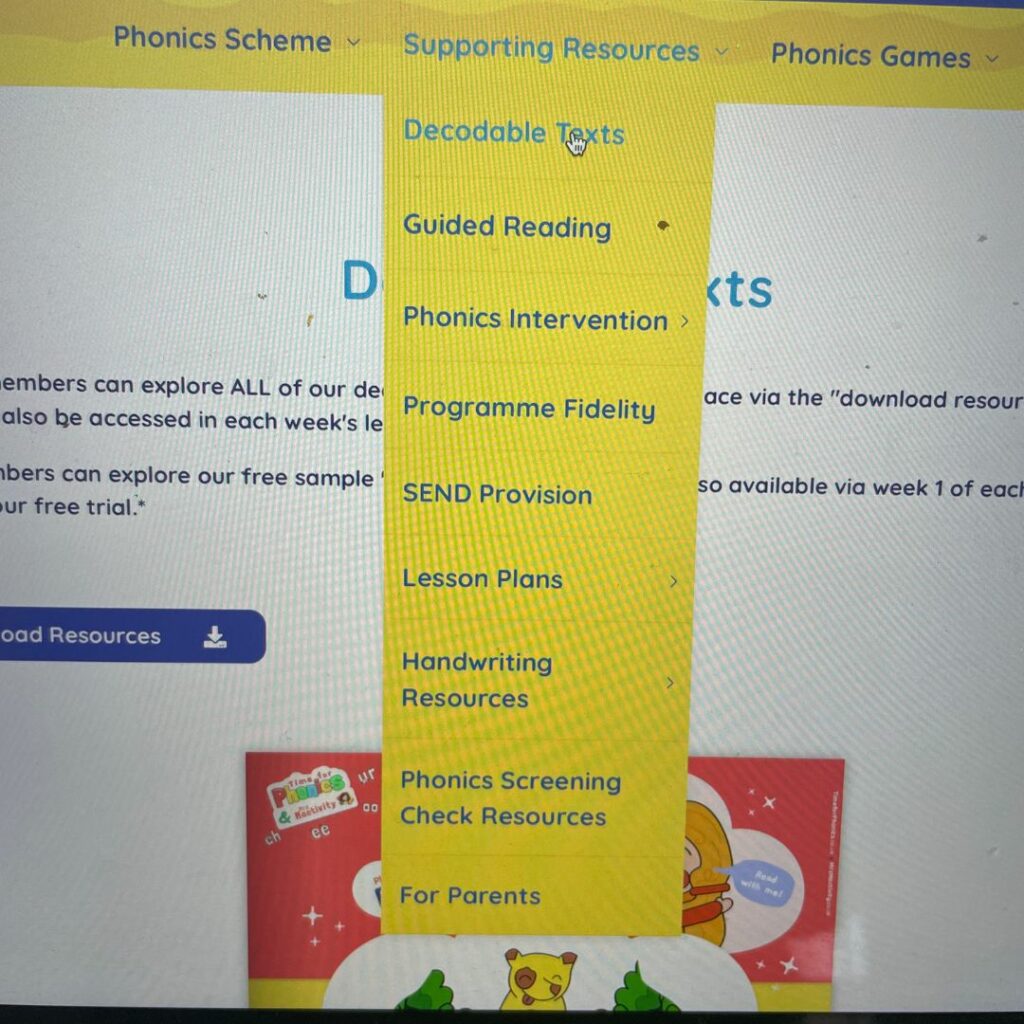
2. Find our decodable text progression guide. Either print it out or make a copy in Google Drive.
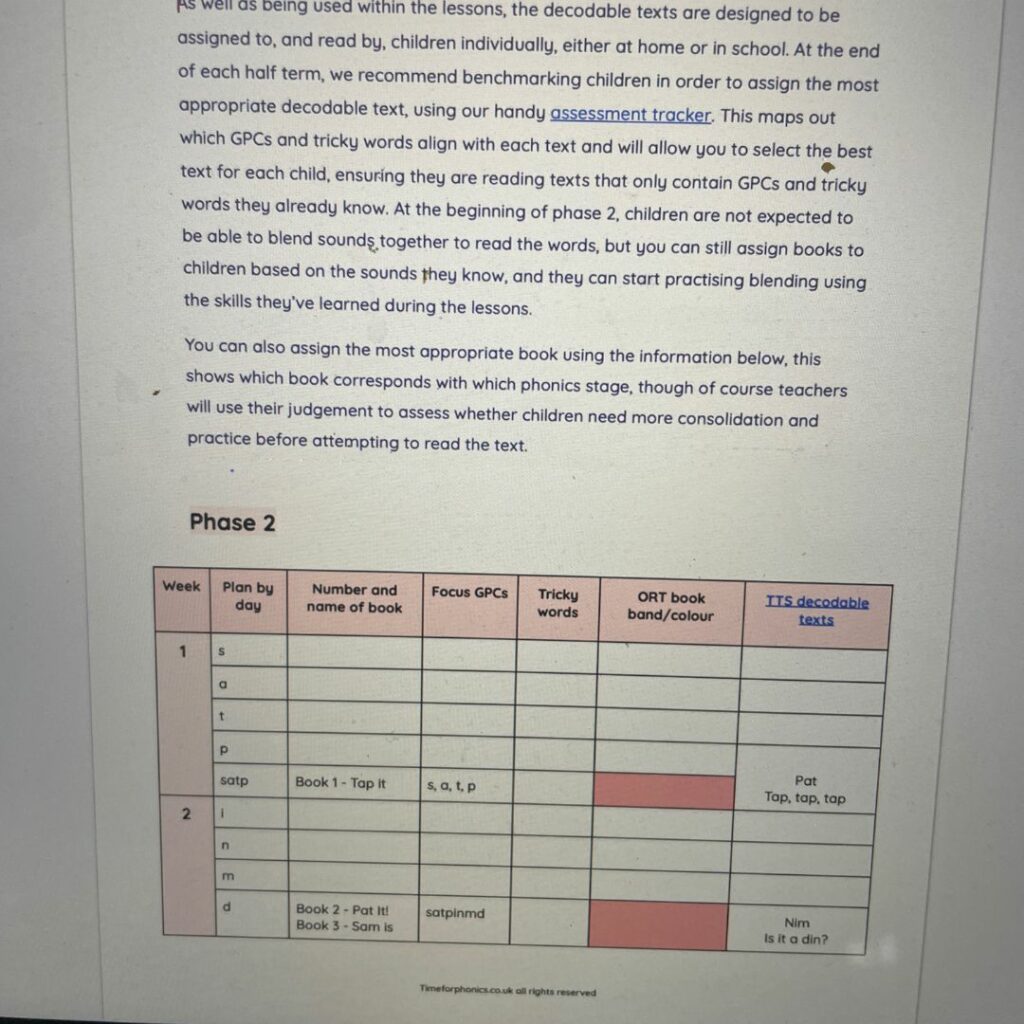
3. Checking each of your physical books one by one, take a look at which sounds and tricky word are featured in each book.
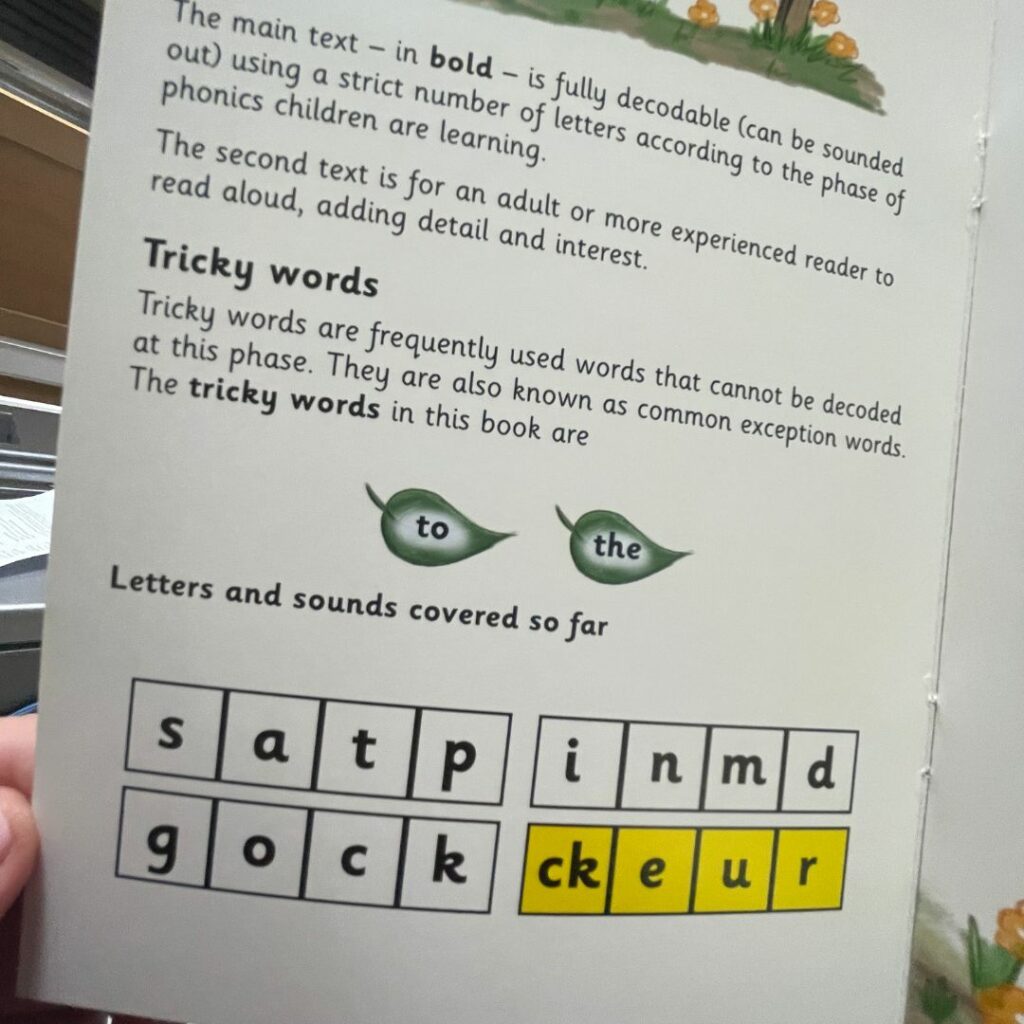
4. On your own copy of our progression document, make a note of where that book falls within our progression. Some books may not match at all, don’t throw these away, keep them as ‘interest’ books for future use. You may also want to attach a sticker to each book, stating which week in our progression the book relates to and/or which order they go in (e.g. book 1, book 2 etc).
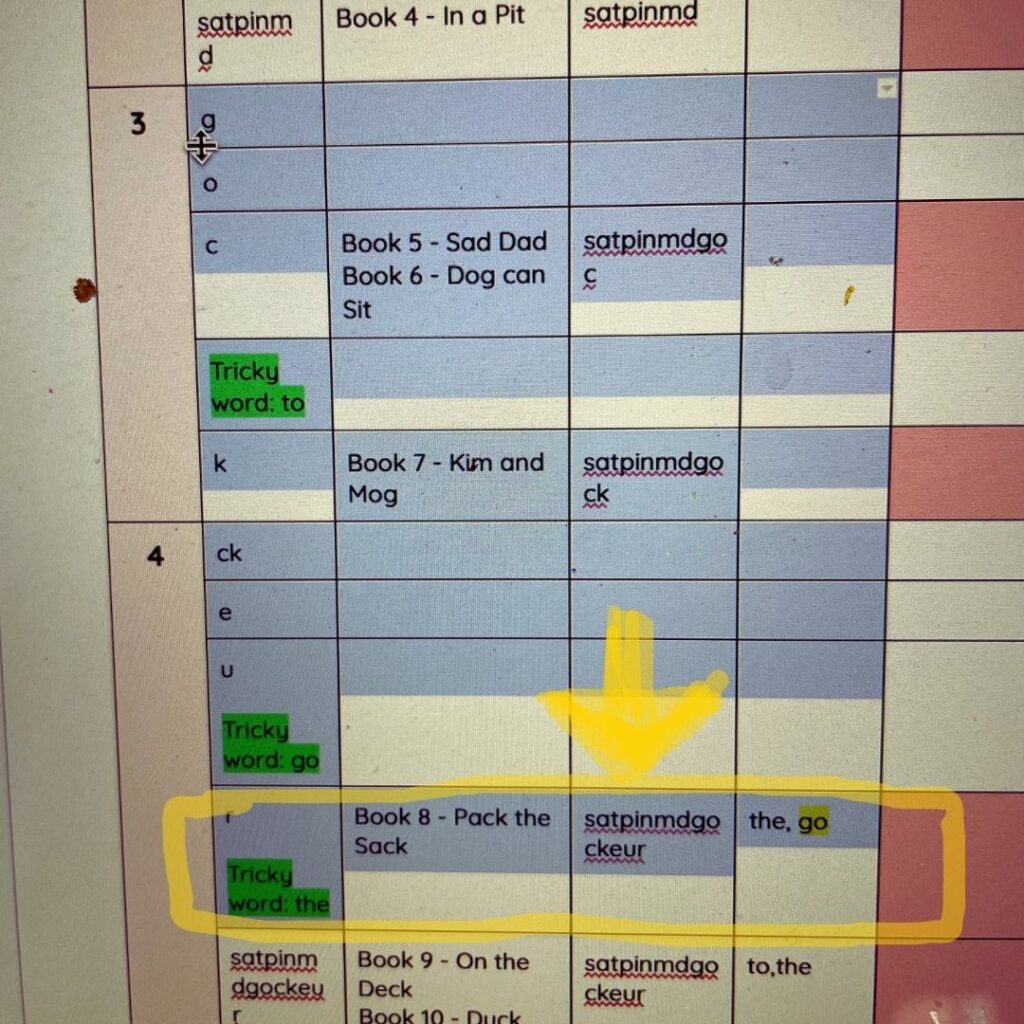
5. Continue for the rest of your physical books, putting them in order, perhaps in plastic wallets or a plastic folder so they are kept in order.
